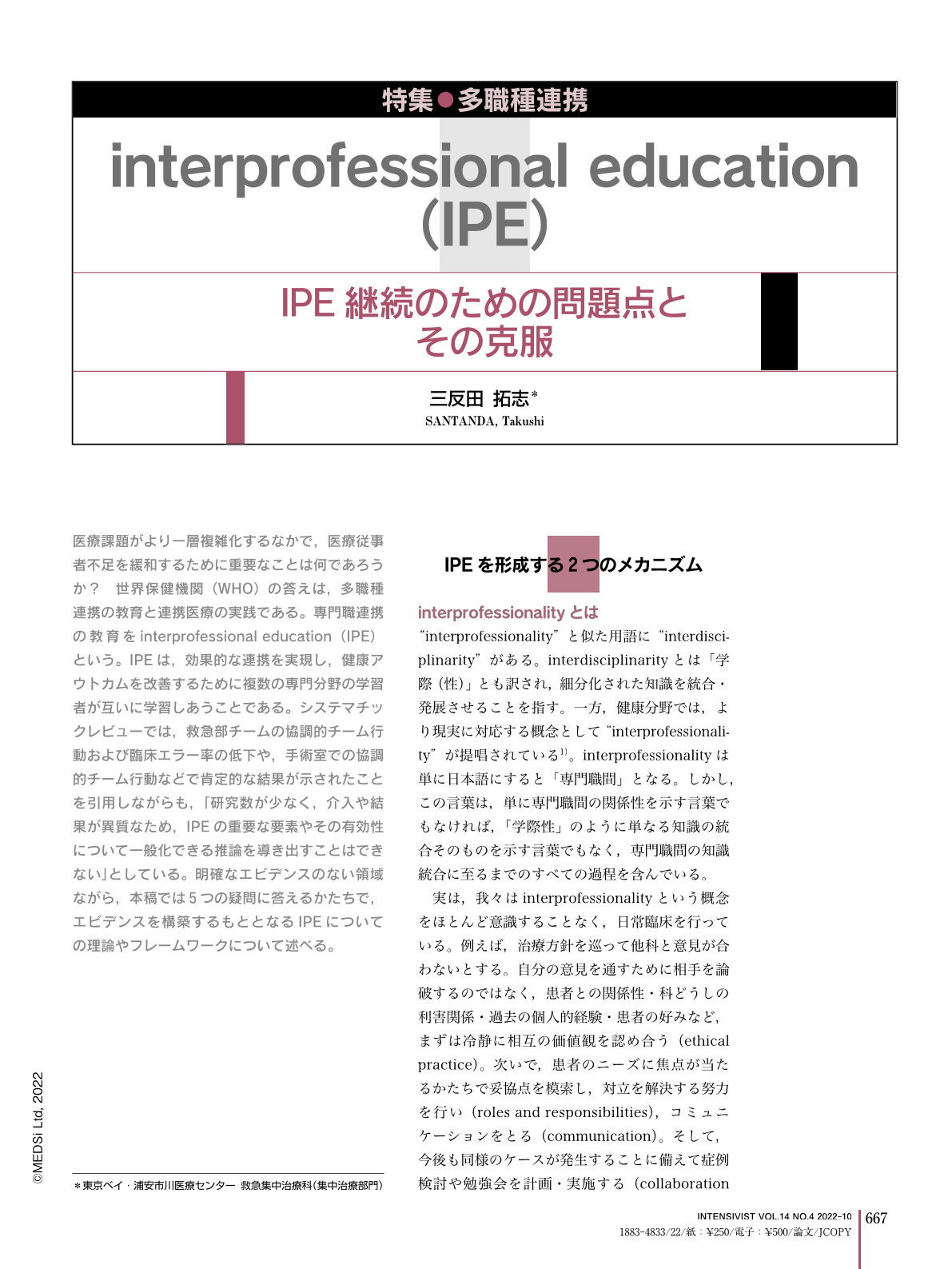Japanese
English
- 有料閲覧
- Abstract 文献概要
- 1ページ目 Look Inside
- 参考文献 Reference
医療課題がより一層複雑化するなかで,医療従事者不足を緩和するために重要なことは何であろうか? 世界保健機関(WHO)の答えは,多職種連携の教育と連携医療の実践である。専門職連携の教育をinterprofessional education(IPE)という。IPEは,効果的な連携を実現し,健康アウトカムを改善するために複数の専門分野の学習者が互いに学習しあうことである。システマチックレビューでは,救急部チームの協調的チーム行動および臨床エラー率の低下や,手術室での協調的チーム行動などで肯定的な結果が示されたことを引用しながらも,「研究数が少なく,介入や結果が異質なため,IPEの重要な要素やその有効性について一般化できる推論を導き出すことはできない」としている。明確なエビデンスのない領域ながら,本稿では5つの疑問に答えるかたちで,エビデンスを構築するもととなるIPEについての理論やフレームワークについて述べる。
As healthcare challenges become more and more complex, what is the key to alleviating the shortage of healthcare professionals? The World Health Organization's answer is interprofessional collaboration in education and practice as an innovative strategy. Education for professional collaboration is referred to as interprofessional education (IPE), occasions when two or more professions learn with, from and about each other to improve collaboration and the quality of care. The systematic review, while citing the findings that positive results were demonstrated in collaborative team behavior and reduced clinical error rates in emergency department teams, and collaborative team behavior in the operating room, “due to the small number of studies and the heterogeneity of interventions and outcome measures, it is not possible to draw generalizable inferences about the key elements of IPE and its effectiveness”. Instead of robust evidence, this section describes the theory and framework of IPE.

Copyright © 2022, MEDICAL SCIENCES INTERNATIONAL, LTD. All rights reserved.


